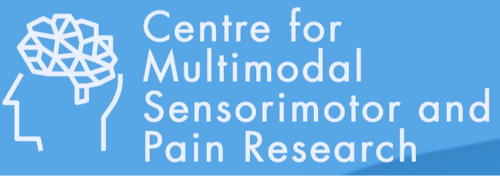Human Pain Seminar Series
This series was borne out of the COVID-19 Global Pandemic, which posed significant challenges to the pain community. Its purpose was to reinforce the message that the we—those who do human pain research—are part of a community.
I put together the #WeAreAllInThisTogether COVID-19 Journal Club. It's an opportunity to connect, to remain intellectually stimulated, to learn, and to keep up with the literature.
It has evolved into a Seminar Series that highlights the work of our community, and allows members of the community at any stage of their career engage with the speakers.
We are supported by the University of Toronto Centre for the Study of Pain.
We meet over Zoom every so often - about every 3 weeks. The specifics, papers, and link to the Zoom will be posted here.
We look forward to seeing you all.
If you wish to be added to the listserv to receive regular updates, please email Massieh Moayedi at m.moayedi@utoronto.ca
Wednesday, March 6 2024 @ 11:00am EST
Title: [11C]-PBR28 positron emission tomography signal as an imaging marker of joint inflammation in knee osteoarthritis
Presented by: Dr. Angelica Sandström, Postdoc, Athinoula A. Martinos Center for Biomedical Imaging, Hardvard Medical School, Massachusetts, United States
Although inflammation is known to play a role in knee osteoarthritis (KOA), inflammation-specific imaging is not routinely performed. In this article, we evaluate the role of joint inflammation, measured using [11C]-PBR28, a radioligand for the inflammatory marker 18-kDa translocator protein (TSPO), in KOA. Twenty-one KOA patients and 11 healthy controls (HC) underwent positron emission tomography/magnetic resonance imaging (PET/MRI) knee imaging with the TSPO ligand [11C]-PBR28. Standardized uptake values were extracted from regions-of-interest (ROIs) semiautomatically segmented from MRI data, and compared across groups (HC, KOA) and subgroups (unilateral/bilateral KOA symptoms), across knees (most vs least painful), and against clinical variables (eg, pain and Kellgren-Lawrence [KL] grades). Overall, KOA patients demonstrated elevated [11C]-PBR28 binding across all knee ROIs, compared with HC (all P's < 0.005). Specifically, PET signal was significantly elevated in both knees in patients with bilateral KOA symptoms (both P's < 0.01), and in the symptomatic knee (P < 0.05), but not the asymptomatic knee (P = 0.95) of patients with unilateral KOA symptoms. Positron emission tomography signal was higher in the most vs least painful knee (P < 0.001), and the difference in pain ratings across knees was proportional to the difference in PET signal (r = 0.74, P < 0.001). Kellgren-Lawrence grades neither correlated with PET signal (left knee r = 0.32, P = 0.19; right knee r = 0.18, P = 0.45) nor pain (r = 0.39, P = 0.07). The current results support further exploration of [11C]-PBR28 PET signal as an imaging marker candidate for KOA and a link between joint inflammation and osteoarthritis-related pain severity.
Relevant Paper: https://journals.lww.com/pain/fulltext/9900/_11c__pbr28_positron_emission_tomography_signal_as.464.aspx
Tuesday, February 27 2024 @ 11:00am EST
Title: Neural Reorganization: Fact or Faction?
Presented by: Dr. Hunter R. Schone, Postdoctoral Researcher, University of Pittsburgh, Pennsylvania, United States
Neuroscientists have long debated the adult brain’s capacity to reorganize itself in response to injury. A driving model for studying plasticity has been limb amputation. For decades, it was believed that amputation triggers large-scale reorganization of cortical body resources. However, these studies have relied on cross-sectional observations post-amputation, without directly tracking neural changes. Here, we longitudinally followed adult patients with planned arm amputations and measured hand and face representations, before and after amputation. By interrogating the representational structure elicited from movements of the hand (pre-amputation) and phantom hand (post-amputation), we demonstrate that hand representation is unaltered. Further, we observed no evidence for lower face (lip) reorganization into the deprived hand region. Collectively, our findings provide direct and decisive evidence that amputation does not trigger large-scale cortical reorganization. Contextualized with the complete ineffectiveness of phantom limb pain treatments in the field designed to reverse supposed maladaptive reorganization, I will make the case against cortical reorganization and its role in phantom limb pain.
Zoom Link:
https://us06web.zoom.us/j/85227837808?pwd=OIahv5mtYtjYHule1HR2AFbIaKownJ.1
Meeting ID: 852 2783 7808
Passcode: cortical
Relevant Paper: https://www.biorxiv.org/content/10.1101/2023.12.13.571314v1.full

